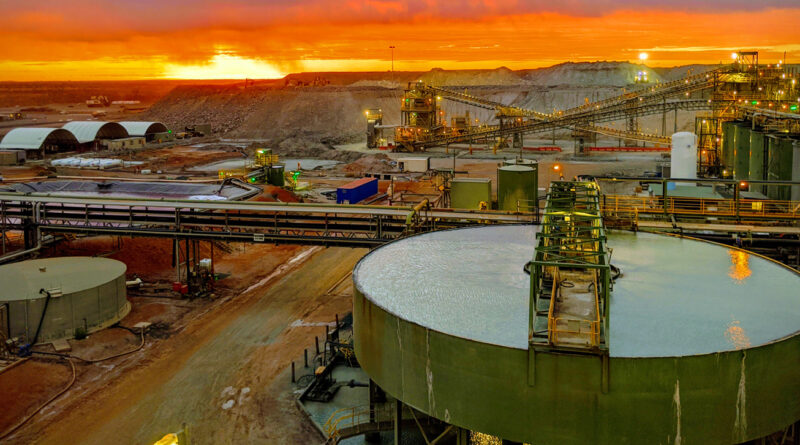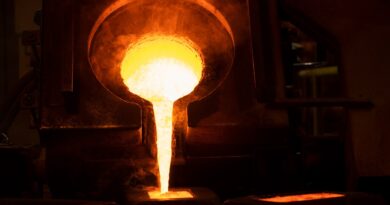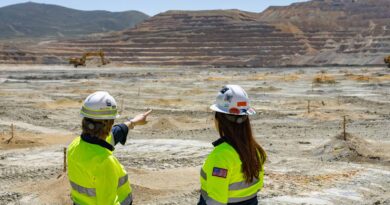AngloGold Ashanti reported solid performance for the first quarter of 2022
Johannesburg – AngloGold Ashanti reported a solid performance for the first quarter of 2022, with production steady year-on-year, an increase in total cash costs limited to 4%, and a strong improvement in cash flow. The Company remains on track to achieve full-year guidance.
Production for the first quarter of 2022 was 588,000oz, unchanged from the first quarter of 2021, with strong improvements from the Australian operations offsetting lower production from Kibali, Geita and also Obuasi, which resumed its underground production ramp-up in January 2022 according to plan. Output from the Americas region was flat.
Production for the first quarter of 2022 was 588,000oz, at a total cash cost of $1,041/oz, compared to 588,000oz at a total cash cost of $999/oz for the first quarter of 2021. Production was flat year-on-year as AngloGold Ashanti continued to progress its reinvestment across key assets.
Production was notably up year-on-year at Sunrise Dam (+33%), Cerro Vanguardia (+21%), Siguiri (+17%) and Tropicana (+14%), driven by a combination of higher throughput and generally improved overall yields across these operations. In Brazil, intense rainfall followed by widespread flooding negatively impacted production at AGA Mineracao during the first quarter of 2022.
At Geita, production was lower in line with the mine plan, as the reinvestment continued to progress at the Nyamulilima open pit, and at the underground mines across the property. At Kibali, production was down mainly due to lower throughput as a result of the strategy to build up and maintain stockpile levels.
Production at Obuasi during the first quarter of 2022 was in line with the ramp-up plan, and the mine remains on track to achieve a full mining rate of 4,000 tonnes per day by the end of the first half of 2022. There was no impact on production from COVID-19 during the first quarter of 2022, compared to 4,000oz in the first quarter of 2021.
Total cash costs per ounce for the first quarter of 2022 were $1,041/oz, compared to $999/oz for the first quarter of 2021. Total cash costs increased mainly due to higher operating costs driven by inflationary pressures ($82/oz) as well as higher royalty costs ($3/oz) as a result of the higher gold price received. Inflationary increases in operating costs were mainly due to higher commodity prices related to oil and consumables and higher cost of services and labour. These increases were partially offset by higher by-product revenue and the lower drawdown of ore stockpiles at certain operations.
All-in sustaining costs (“AISC”) for the first quarter of 2022 were $1,405/oz, compared with $1,287/oz for the first quarter of 2021, mainly due to higher total cash costs, and the planned increase in sustaining capital expenditure. AISC for the first quarter of 2022 included an estimated incremental $5/oz impact due to COVID-19 and an estimated $52/oz impact relating to the Brazilian tailings storage facility (“TSF”) compliance programme, compared to an estimated $29/oz impact due to COVID-19 and an estimated $25/oz impact relating to the Brazilian TSF compliance programme during the first quarter of 2021.
GUIDANCE
Group guidance for production remains unchanged at 2.55Moz to 2.80Moz, with the majority of the production growth expected to come from Obuasi. Across the rest of the portfolio, AngloGold Ashanti anticipates some marginal improvements in production at Iduapriem, Siguiri and Geita, and consistent performances at the remaining assets.
Group guidance for total cash costs remains unchanged at $925/oz to $1,015/oz and for AISC at $1,295/oz to $1,425/oz. The total cash cost forecasts for 2022 are driven by increases in the prices of oil, consumables and logistics, with AISC further impacted by elevated levels of sustaining capital expenditure in line with the prior year. Management anticipates that most of these inflationary pressures are catered for in the current guidance range.
Total capital expenditure group guidance remains unchanged between $1,050m and $1,150m, with sustaining capital expenditure between $770m and $840m and non-sustaining capital expenditure between $280m and $310m.




